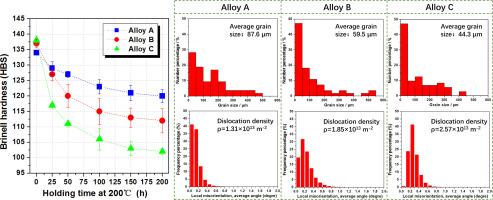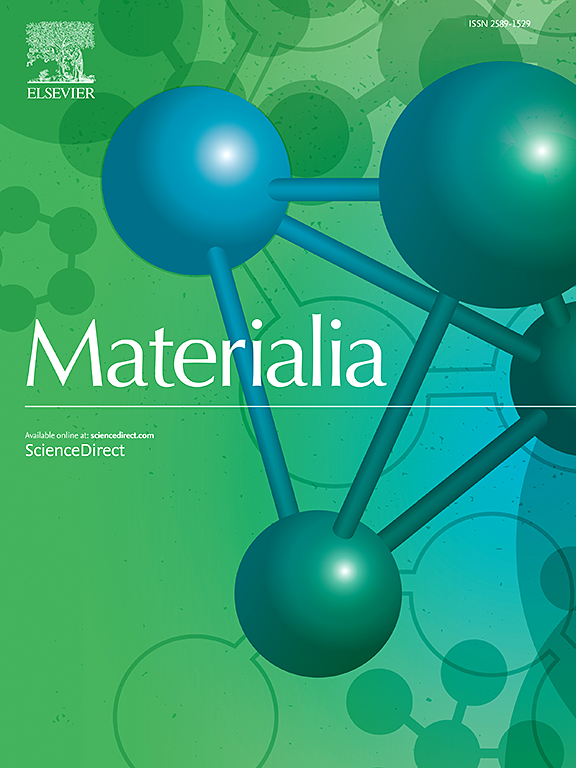Effect of grain size and dislocation density on thermal stability of Al-Cu-Mg alloy
IF 3
Q2 MATERIALS SCIENCE, MULTIDISCIPLINARY
引用次数: 0
Abstract
Thermostable Al alloys have been a consistent focus for decades, mainly adopting alloying strategy to improve thermostability of precipitates. In this work, it was found that matrix defects controlling could be a new way to improve thermal stability of Al alloys. Three alloys with composition of Al-4.1Cu-2.1Mg-0.3Mn but varied dislocation densities and grain sizes were prepared, and their thermal stability at 200 °C were investigated by identifying hardness vs. holding time curves. It revealed that the alloy with high dislocation density and small grain size showed poor thermal stability. Because dislocation and grain boundary provided accelerated diffusion channels for Cu and Mg atoms, leading to rapid growth of S’(Al2CuMg) precipitates, and the growth rate was a liner function of square of dislocation density ρ2 or square of grain size reciprocal 1/d2 according to data fitting. A “dislocation affected zone” model was proposed to explain the diffusion phenomenon.

晶粒尺寸和位错密度对铝铜镁合金热稳定性的影响
几十年来,热稳定性铝合金一直是人们关注的焦点,主要采用合金化策略来提高析出物的热稳定性。这项研究发现,控制基体缺陷可能是提高铝合金热稳定性的一种新方法。研究人员制备了三种合金,其成分为 Al-4.1Cu-2.1Mg-0.3Mn,但位错密度和晶粒大小各不相同。结果表明,位错密度高、晶粒尺寸小的合金热稳定性较差。由于位错和晶界为铜和镁原子提供了加速扩散的通道,导致 S'(Al2CuMg)析出物快速生长,根据数据拟合,生长速率是位错密度 ρ2 的平方或晶粒尺寸倒数 1/d2 的平方的衬函数。提出了 "位错影响区 "模型来解释扩散现象。
本文章由计算机程序翻译,如有差异,请以英文原文为准。
求助全文
约1分钟内获得全文
求助全文
来源期刊

Materialia
MATERIALS SCIENCE, MULTIDISCIPLINARY-
CiteScore
6.40
自引率
2.90%
发文量
345
审稿时长
36 days
期刊介绍:
Materialia is a multidisciplinary journal of materials science and engineering that publishes original peer-reviewed research articles. Articles in Materialia advance the understanding of the relationship between processing, structure, property, and function of materials.
Materialia publishes full-length research articles, review articles, and letters (short communications). In addition to receiving direct submissions, Materialia also accepts transfers from Acta Materialia, Inc. partner journals. Materialia offers authors the choice to publish on an open access model (with author fee), or on a subscription model (with no author fee).
 求助内容:
求助内容: 应助结果提醒方式:
应助结果提醒方式:


